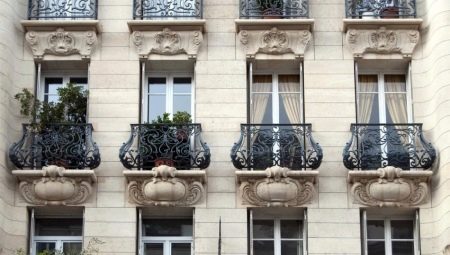The unique charm of European streets is largely due to the design of the facades of French balconies. Today, this architectural element is becoming more and more popular with us, and its appearance can be both traditional and ultramodern.
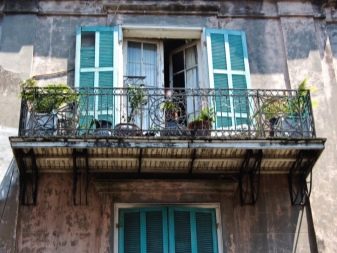
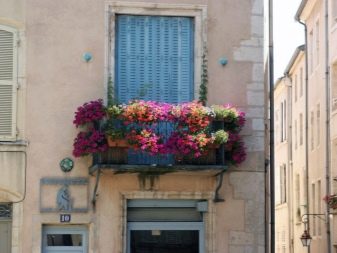

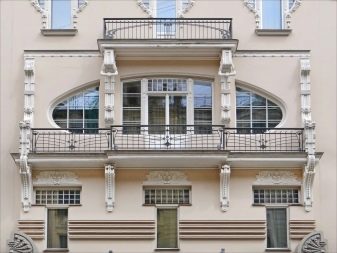
What it is?
The French balcony in its classical form is a construction without a balcony area or with a minimum size. On the outside of the door of the balcony block directly in its aperture or slightly stepping away from it, a metal fence (most often forged) is fixed on a small balcony slab. This type of balcony is used on window openings, which are also called French - panoramic windows (doors) with glass cloth from floor to ceiling.
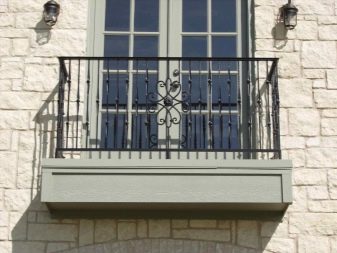
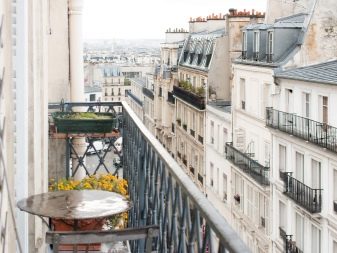
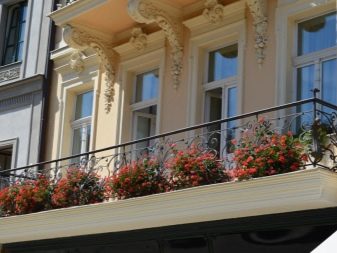
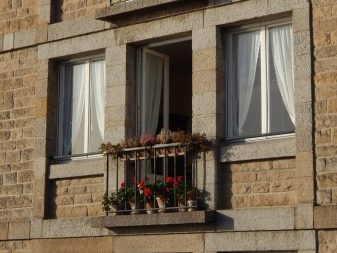
Recently, there has been some confusion and substitution of these concepts, and even the usual full-sized loggias or balconies, sheathed with a lightweight glass structure in full height, are sometimes called French, although if the balcony has a standard extension, it is more correct to call this way of glazing.
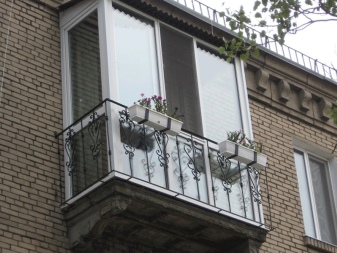
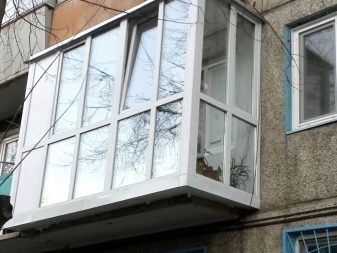
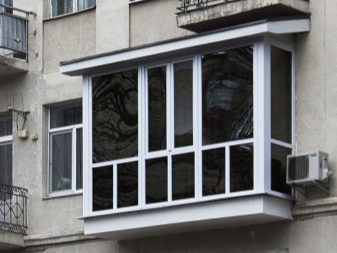
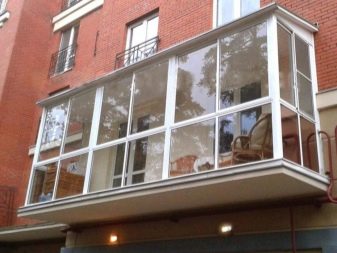
Origin history
According to the architectural dictionary, the name of this building is Portfolio (from the French portefenêtre, where porte is the door and fenêtre is the window). The term is repeatedly found in the literature of the XVIII-XIX centuries, because the element itself was unusually common in the homes of nobles, decorating and making their facades richer.
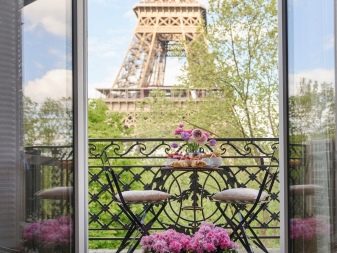
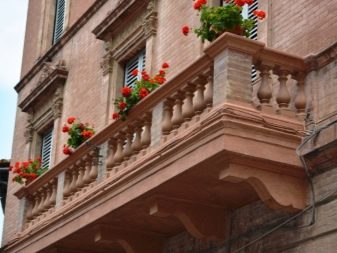
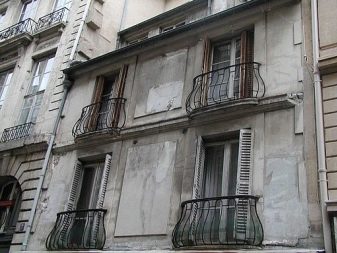
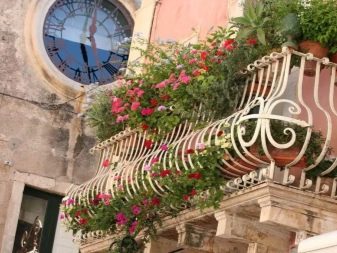
The Cambridge Dictionary gives its name to a similar design - Juliet balcony (Juliet's balcony), describing it as "a very narrow balcony with a vertical metal grill and door-windows." According to legend, the founder of the beautiful name Shakespeare was inspired by the miniature balconies of ancient Verona.
Although, in addition to disputes about the identity of Shakespeare himself, historians still find out if he ever visited Italy. But, it turns out, nevertheless he had heard about the features of its architecture.
Similar balconies with platforms slightly protruding from the wall can still be found today in ancient Italian and Spanish mansions, peers of Shakespearean heroes.
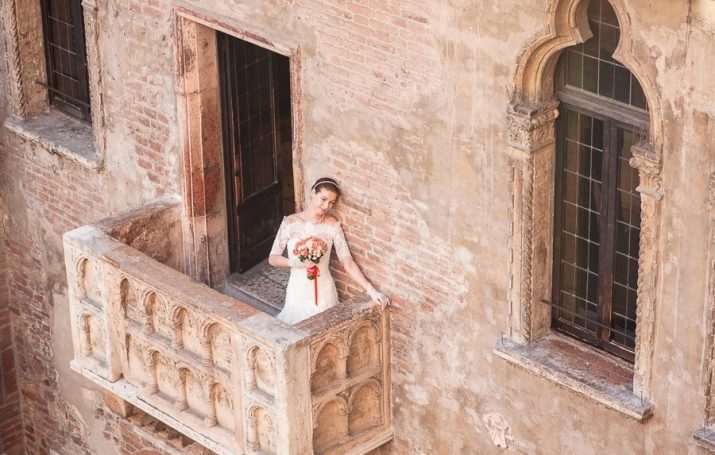
In general, such an element as a balcony was originally used to defend feudal possessions and to monitor the movements of a potential enemy. The French version of this element arose later. This invention appeared in medieval Europe and has several versions of its origin. According to one of them, the spread of French balconies was facilitated by the horrific hygiene situation and the lack of urban sewage.
The outwardly luxurious and aristocratic life of the Paris nobility had a rather unpleasant inside out, because slops and sewage poured onto the streets of the city right from the windows. For greater comfort, they began to make large glass stained-glass windows to the floor, and forged barriers ensured safety.
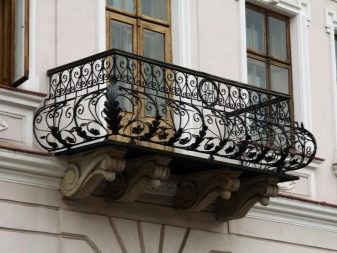
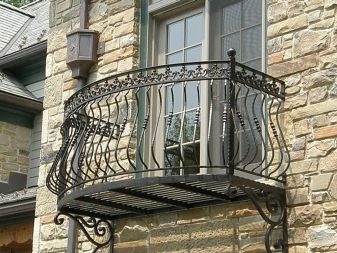
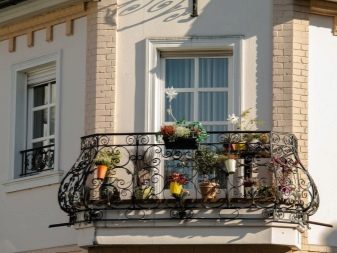
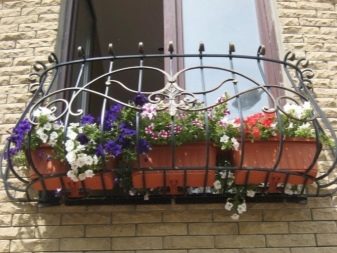
If you do not take into account this not very decent version, you can find other reasons why the French balcony has acquired its characteristic appearance. The minimum size of the site of such balconies was due to very narrow streets, because some of them were only a meter wide. Crowded in these "stone bags", the townspeople sought to add more light to their homes by enlarging the windows to the floor and decorating them with openwork gratings and fresh flowers.
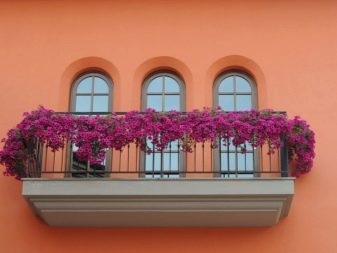
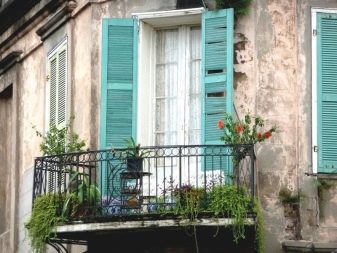

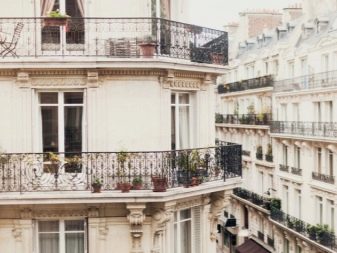
Advantages and disadvantages
The French balcony gives charm to the exterior of the building and the interior. It must be borne in mind that such a design has both advantages and disadvantages.
Pros:
- visual expansion of the space of the room when the boundary between the interior and the external landscape is erased;
- more daylight and energy savings;
- installation of the fence does not require laborious installation with welding work;
- savings on the lining and decoration of the interior of the balcony and insulation of the structure;
- various decoration options;
- non-standard appearance.
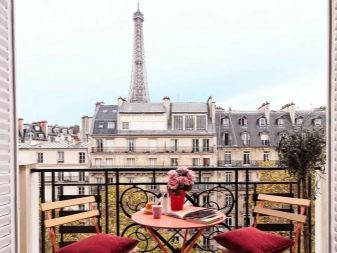
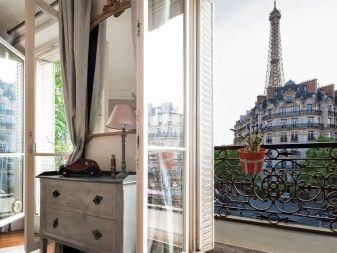
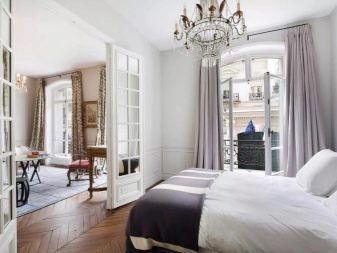
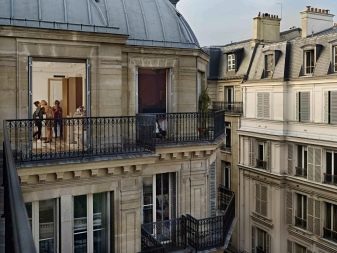
Minuses:
- high cost of high-quality heat-saving and noise-proof panoramic double-glazed window;
- decorating with flowers in the conditions of most of the territory of Russia is possible only in the summer, and the absence of a window sill will not allow them to be installed from the inside;
- placing such a balcony on the sunny side of the facade requires additional shading, so that the heat does not penetrate into the room, and furniture, paintings and interior items are not faded from the sun;
- the area for cleaning glass surfaces increases;
- lack of privacy - if such a balcony is installed on the lower floors or opposite the other window-to-window house, your interior space will be put on public display.
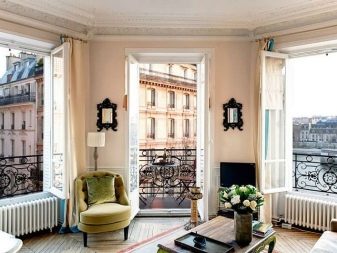

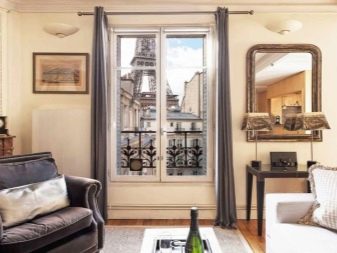
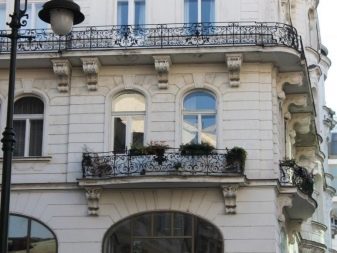
Comparison with a regular balcony
The competition with the full-size version of the classic small French balcony loses outright, if we talk about the usable area. To use it for storage of a replaceable set of tires, boxes with tools or to install a clothes dryer on it, alas, will not work. Sunbathing and relaxing on it, too, will not work. In fact, we just have a balcony door with an external fence.
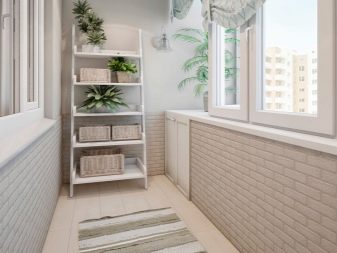
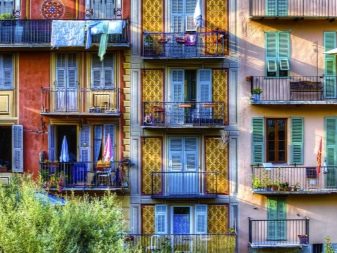
But, being indoors, one can notice that the continuous glazing and the absence of a blind parapet in the French version gives more daylight and opens up a beautiful panoramic view. The height of the grill may be different, but it is always light, transparent.
Outside, this design is very decorative and creates unlimited scope for the imagination of designers.
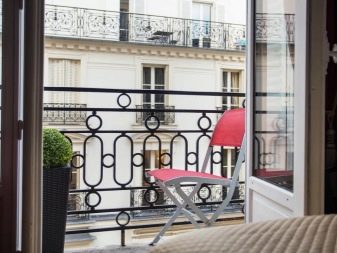
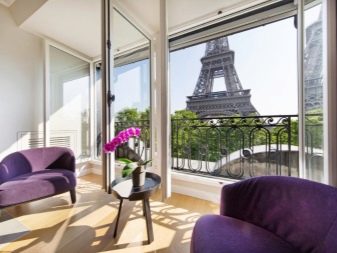
Today, ordinary balconies in typical houses look, of course, more attractive than their predecessors in the "Khrushchev" or old panel houses. Sheathed somehow with different materials: siding, slate, plywood - I would like to leave this legacy of the Soviet era forever. If we talk about French glazing, it raises the aesthetics of the balcony to a whole new level - the outwardly light and transparent design looks at least clean and stimulates the glazed space to be kept in perfect order.
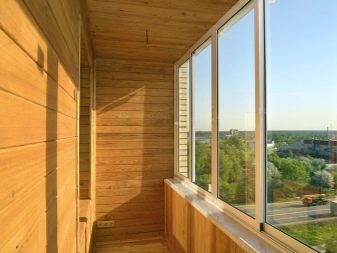
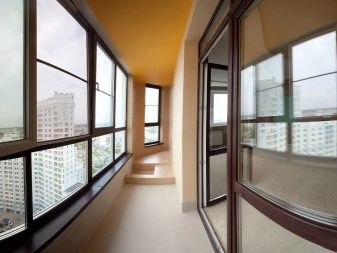
In modern houses of elite buildings, more and more often there is no place for a traditional balcony - panorama-glazed warm loggias are massively designed. But the French balcony is actively used by designers.
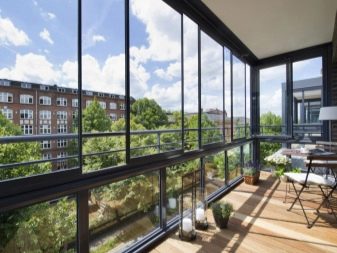
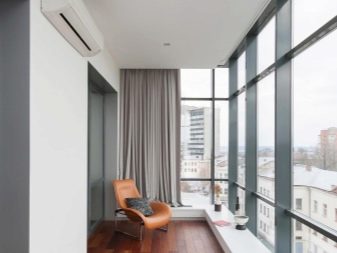
Variety Overview
The types of such balconies can be classified depending on the size of the site: it is either completely absent or protrudes slightly from the wall (its average size is about 30-50 cm), allowing one person to step on it or comfortably place flower boxes and flowerpots. The protrusion shape in the historically established tradition is semicircular, but also rectangular.
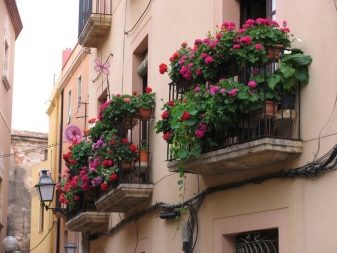

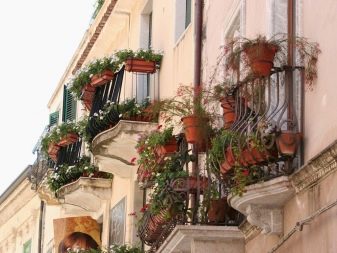
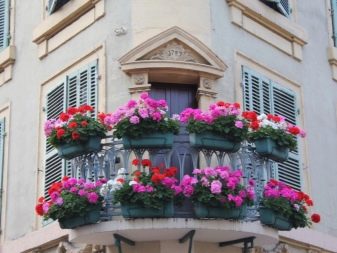
Different appearance and functionality provide constructive solution of double-glazed window It can be made with hinged sashes, with blind glazing, divided into segments, opened in whole or in part.
A plastic or aluminum profile is used, which allows you to make the sliding opening system.

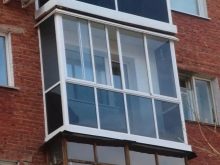
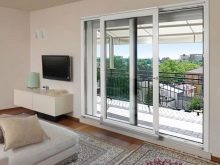
Varieties of balcony railing:
- forged trellised parapet of the most diverse design;
- simpler barriers made of square or round pipes (ferrous metal, stainless steel, aluminum);
- fencing made of thick tempered glass in combination with metal elements;
- the balcony can be without any additional fencing, then only the upper wings open at the glazing.
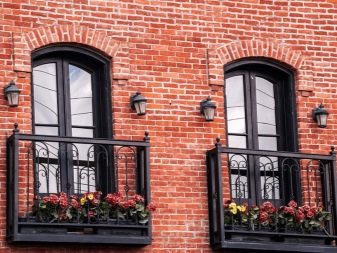
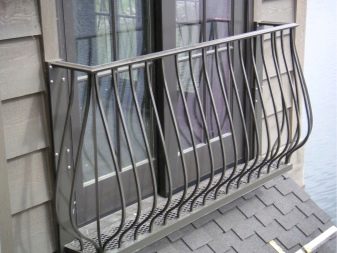
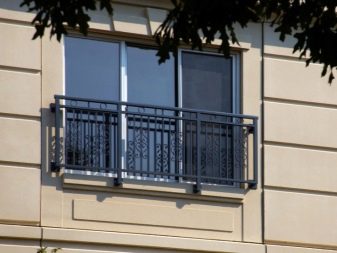
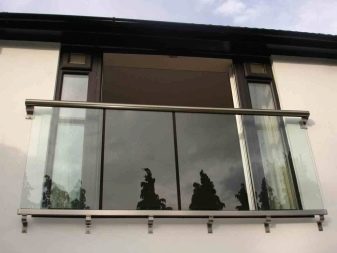
Do i need permission?
To place a French balcony on an already populated apartment building permits will be required, sometimes including voting by all apartment owners in the building. An inconsistent installation can result in a large fine and a dismantling requirement. If the balcony was not provided at all and it is planned to make it by enlarging the window opening and installing a fence, such a redevelopment in the apartment affects the appearance of the wall.
Supervisory architectural departments are quite strictly related to such liberties. And if the house is listed in the register of architectural monuments or located in a historically established ensemble, the task becomes almost impossible.
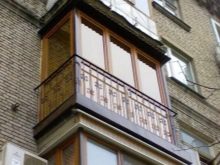
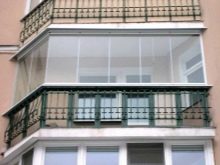

New homes can also be difficult. Each new building has an agreed facade design project that cannot be changed.
In different regions the requirements may vary, it is necessary to consult the local BTI.
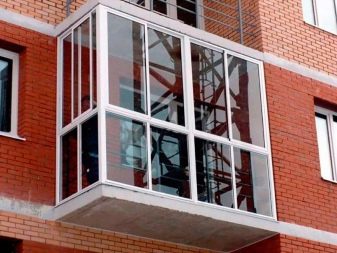

Assuming the installation of a French balcony, it is necessary to take into account the technological side. If the glazing is carried out on an existing balcony slab, then, for example, in the Khrushchev’s five-story building or an old prefabricated house, they are not designed for the rather heavy weight of the metal-plastic bag, which means that permission can only be obtained for a lightweight aluminum profile, and the site needs to be strengthened.
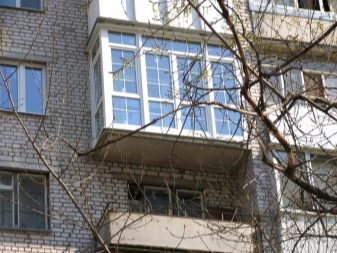
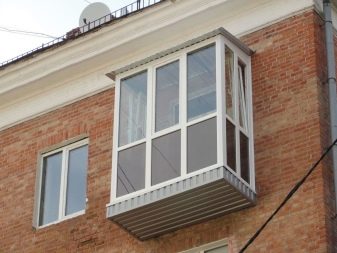
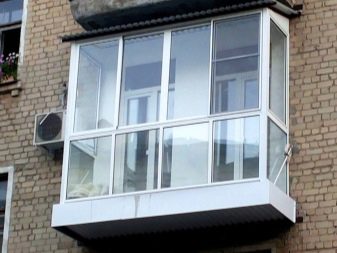
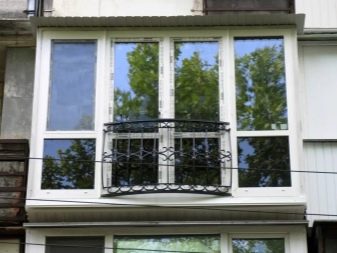
When designing a cottage, the customer is involved in the process and, in cooperation with the architect, can realize any of his wishes on paper and at the construction stage, including the placement of a French balcony. In a private house, no coordination is required, the main thing is to attract professionals and correctly calculate the load on the structure.
In a wooden house, such a structure will also look harmonious, especially with a fence made of wooden baluster racks.
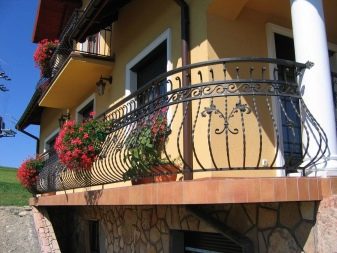
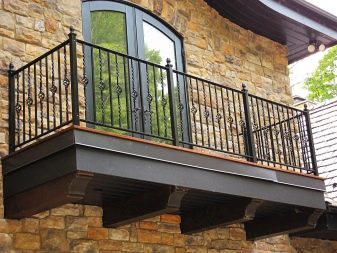
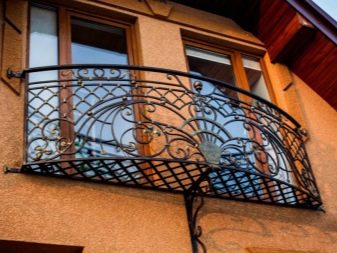
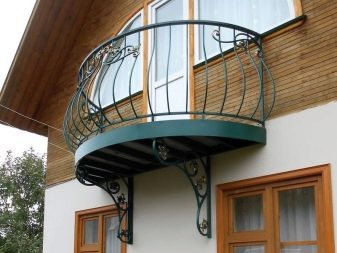
What to finish?
Finishing the French balcony should take into account such an important characteristic in our climate as the heat saving of the balcony door. The warmer the glass unit, the heavier it is, because an increased number of cameras allows it to be insulated. In southern areas, a lightweight aluminum profile is a good choice.
In places with increased wind load and on the upper floors of modern high-rise buildings, it is better to place not a single piece of glass canvas, but divided into sections, this will help to avoid sailing. Especially airy looks expensive frameless glazing, but it is not too practical.


The glass itself can be transparent, frosted, tinted, or these options can be combined. Perfect for prying eyes. glass with one-side transparency. Sometimes the lower sections are covered with sandwich panels or glued film.
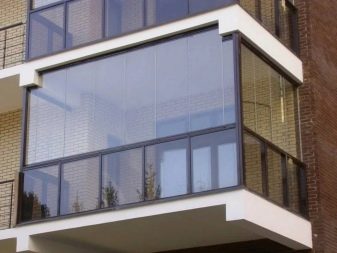
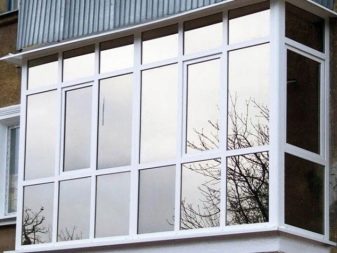
Design options
The modern French balcony is not only forged plant patterns of elegant lattices, although thousands of options are also possible with this design. Real blacksmithing craftsmen are able to create unique ornaments, turning a purely functional structural element into an object of art. On a typical brick or panel structure, such pretentiousness and luxury, of course, is alien.
Such a balcony would be appropriate to look at the cottage or the facade of the building in the classical style in harmony with other architectural elements: columns, pylons, cornices, stucco moldings. Forging can be slightly touched by gold paint, which further enhances the decorative effect.
A classic grille with a double-glazed window not white, but a dark shade, for example, under a tree, especially on a brick facade, will look interesting.
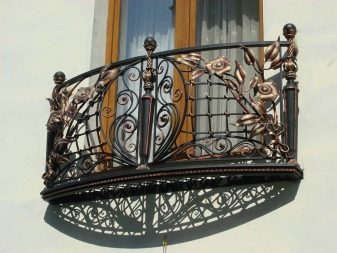
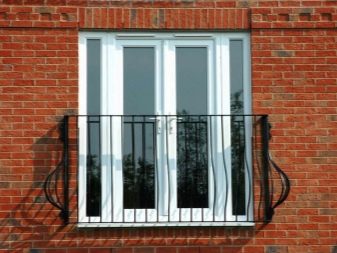
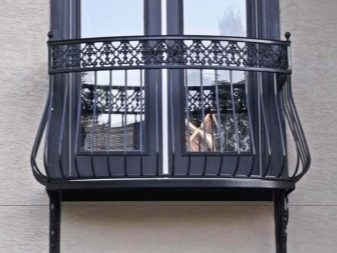
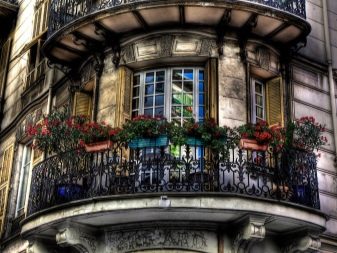
Metal lattices of strict concise forms will fit most buildings. The neutral design of such a balcony does not attract too much attention. An interesting solution can be the placement of such fences on the windows, which will create a single ensemble of the entire facade. Today, office buildings are often decorated in such a way, where the balcony is absolutely not in demand as a recreation area or a place to store something, but as a way to fill the offices with additional daylight, it will be very useful.
The interior of the room itself should also echo the decision of the balcony group. If the balcony is made with a baroque patterned fence, it will be strange to see behind it a room in the cold style of minimalism with clean straight lines and plain surfaces.

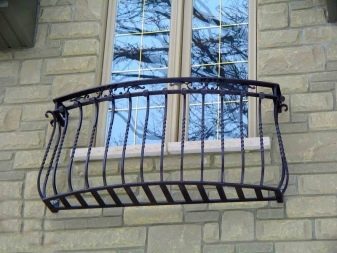
Design Features
The usual way to create a small space of a balcony - boxes and flower pots. Despite the traditional, floristic compositions are always pleasing to the eye and do not bother. Even in cloudy weather, bright colors of plants will create a good mood. On the gratings are made special devices for installing hanging planters. Climbing plants beautifully braid the perimeter of the entire fence. Of course, you must ensure that all containers are well secured so as not to endanger passers-by.
In European cities, residents like to sit by the wide-open door of such a balcony with a cup of coffee in the morning or with a glass of wine in the evening, watching the bustle of the streets. Exit to the balcony can be decorated on both sides of the glass with wall lanterns. A cozy image of the country veranda will create a light awning, the marquise, in addition, this is an excellent solution for shading on the south side of the building.

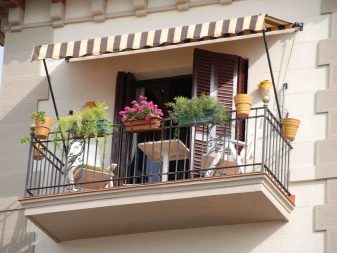
From ancient times in Europe, windows and balcony doors were shuttered outside. Modern options for protection from sunlight and unnecessary looks - Roman and roll curtains, curtains, blinds. It is important that they can be easily lifted or moved. When the space is open from floor to ceiling, curtains with patterns and patterns can look fabulous from the street. It is better to choose plain fabrics.
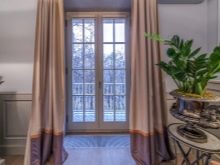

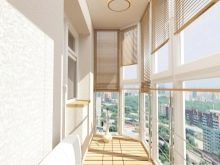
Beautiful examples
- An idea rich in decor: shutters, stucco molding, twisted lattice and a complex arched opening.
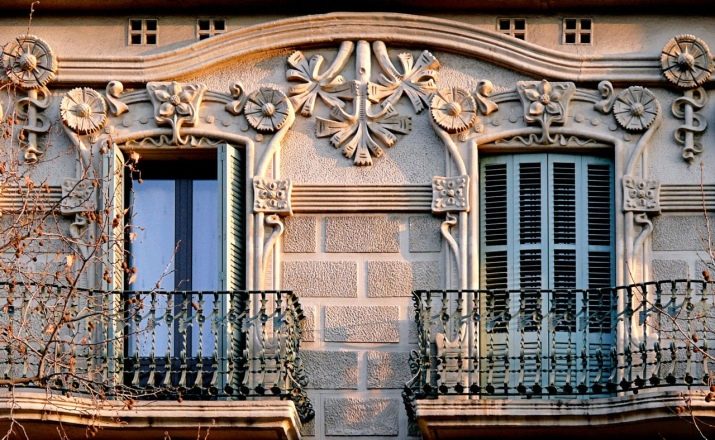
- Simple fencing and unobtrusive decor on the facade.
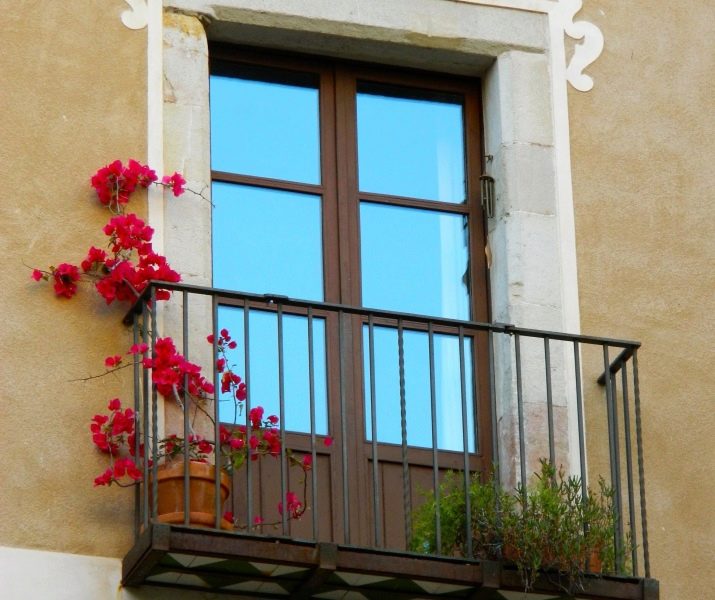
- Very beautiful stucco molding and a classic semicircular fence.

- A truly royal facade.
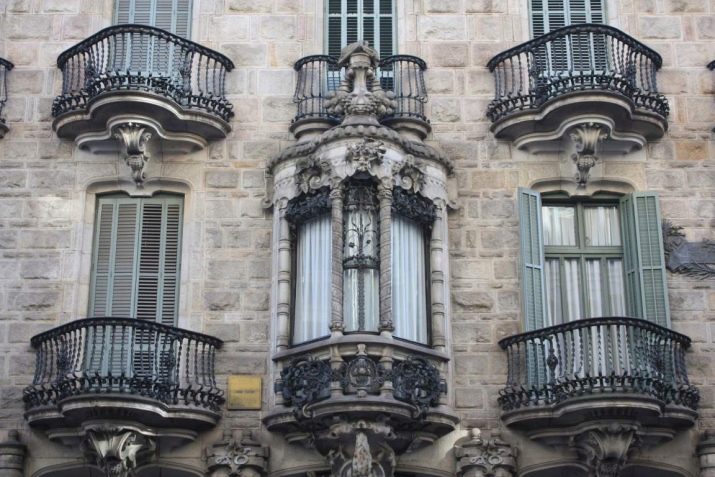
- The antique lantern is made in the same style with black wrought iron fencing.
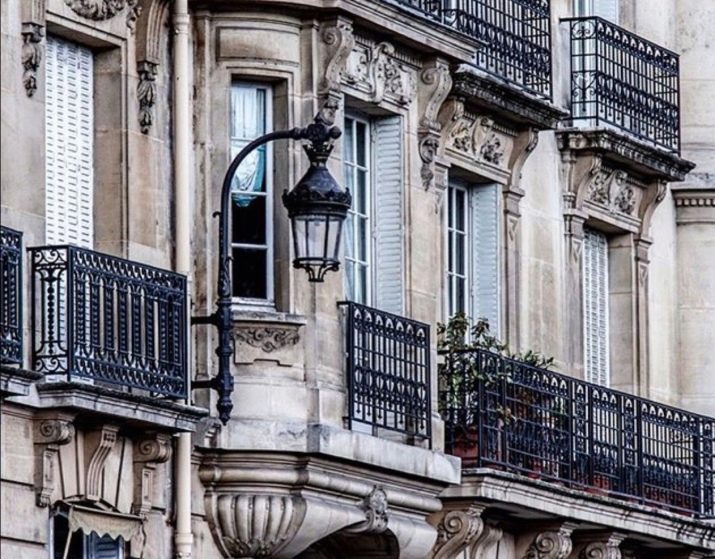
- Baroque building.
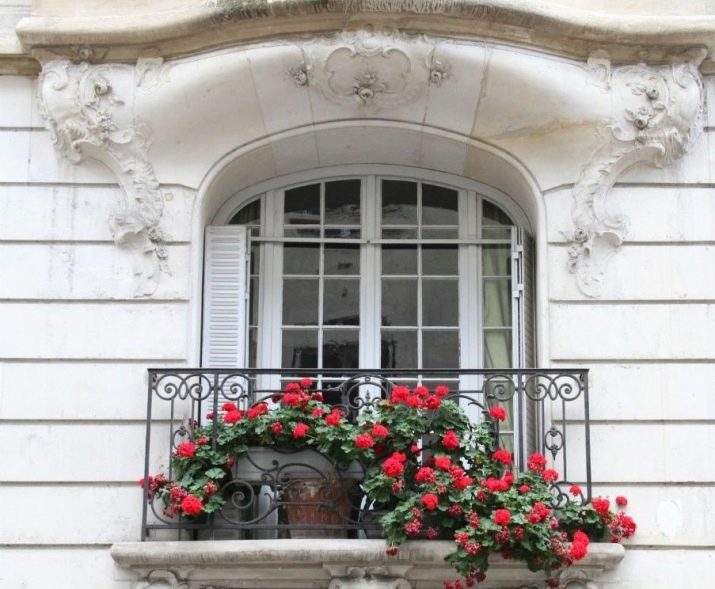
- Coffee and croissants by the open French balcony are a typical Parisian morning.
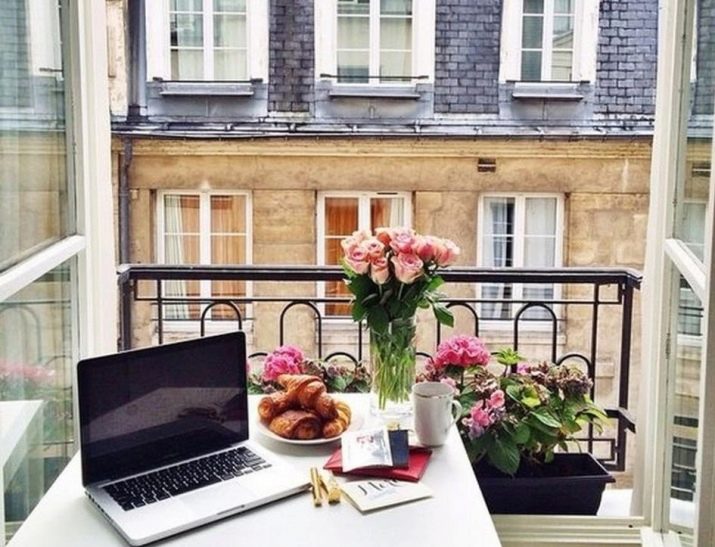
- The view of the Eiffel Tower is priceless!
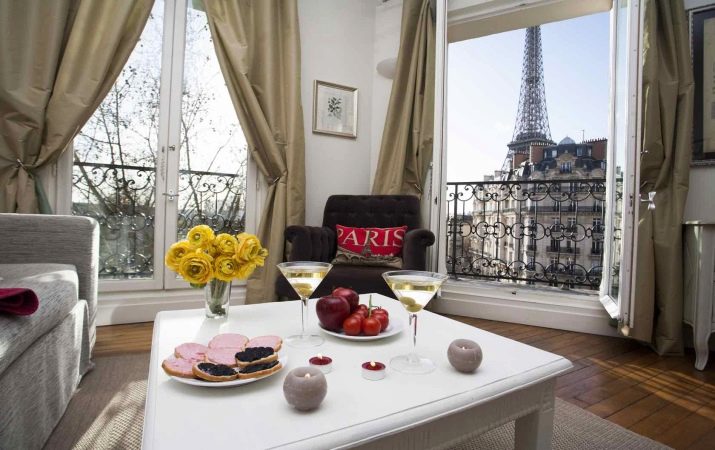
- French balcony in a normal Parisian bathroom.

- Graceful grille.
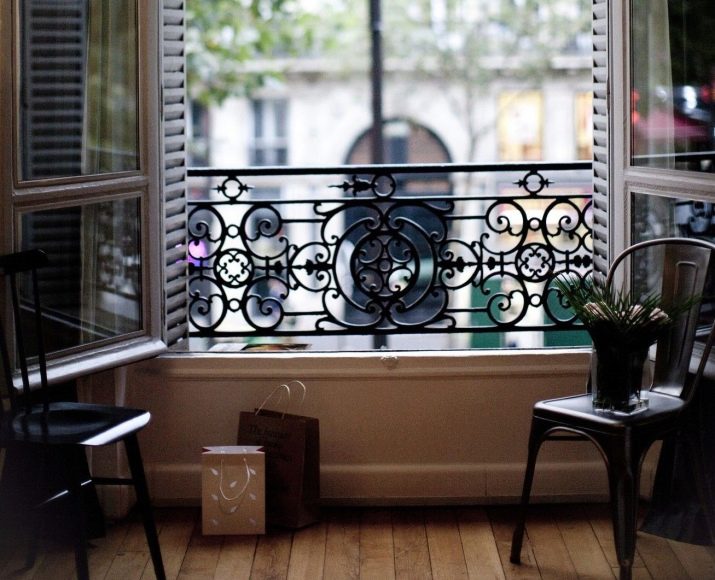
- Although the view is not the best, the mood is created by the details.
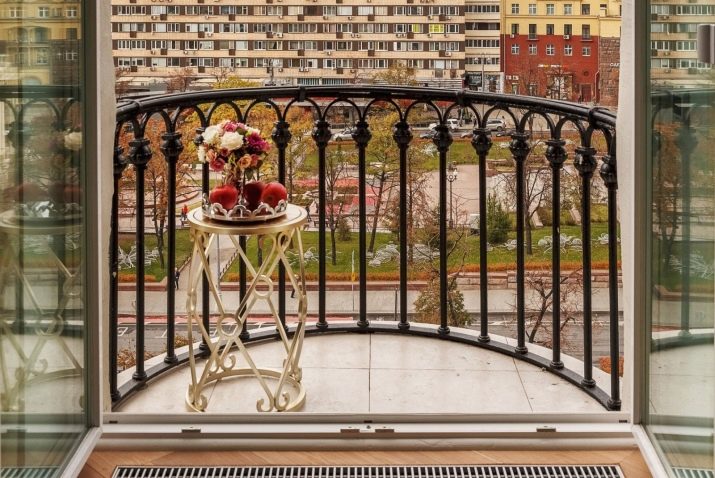
- Sweeping laconic doors and a simple fence, because the main thing here is the beautiful landscape outside the window.
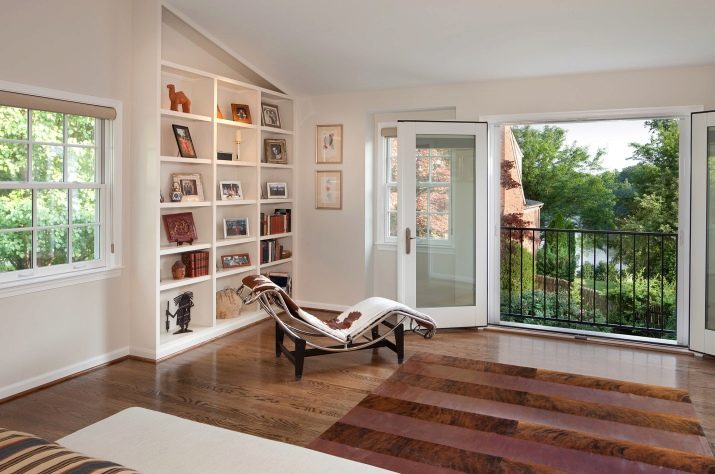
- House in Yalta and, of course, sea view. The wave-like fencing lines support the maritime theme.
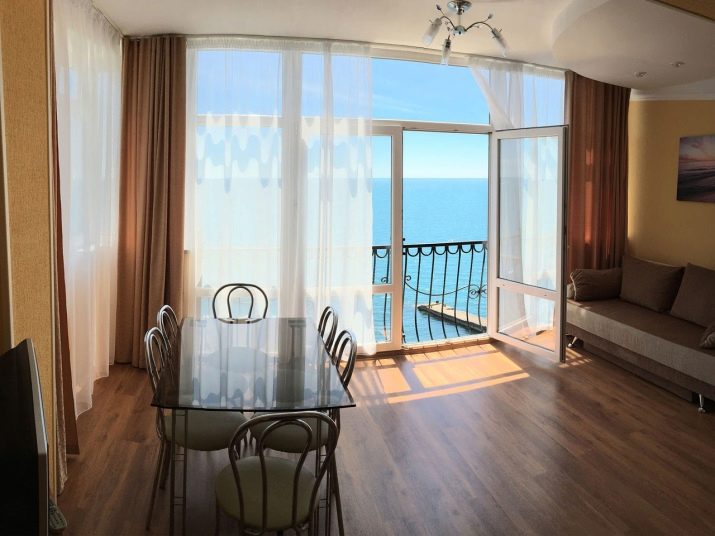
- The classic "pot-bellied" basket lattice in a non-trivial color.
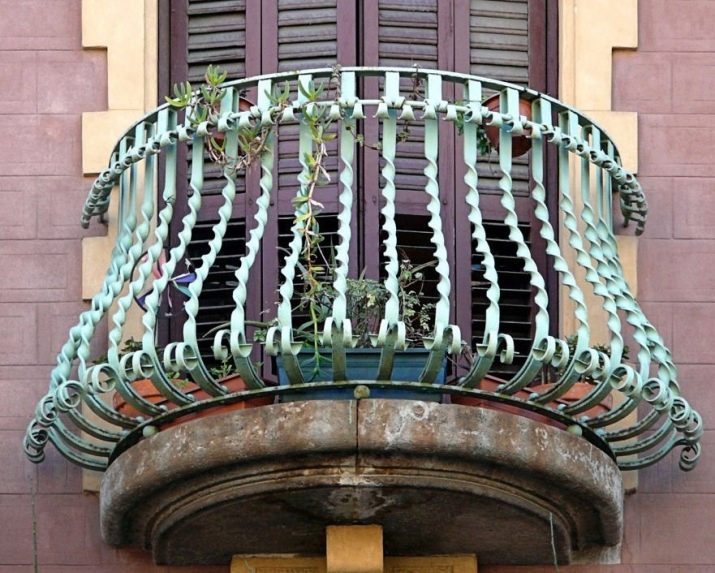
- A modern reading of the classics is a worthy work of forging masters, a beautiful binding of the door.

- The opening of the balcony door is beaten by wall lights.

- A richly decorated Moorish-style facade with a French balcony in a bay window.

From the following video you will find out the common mistakes and difficulties that arise after improper installation of the French balcony.
